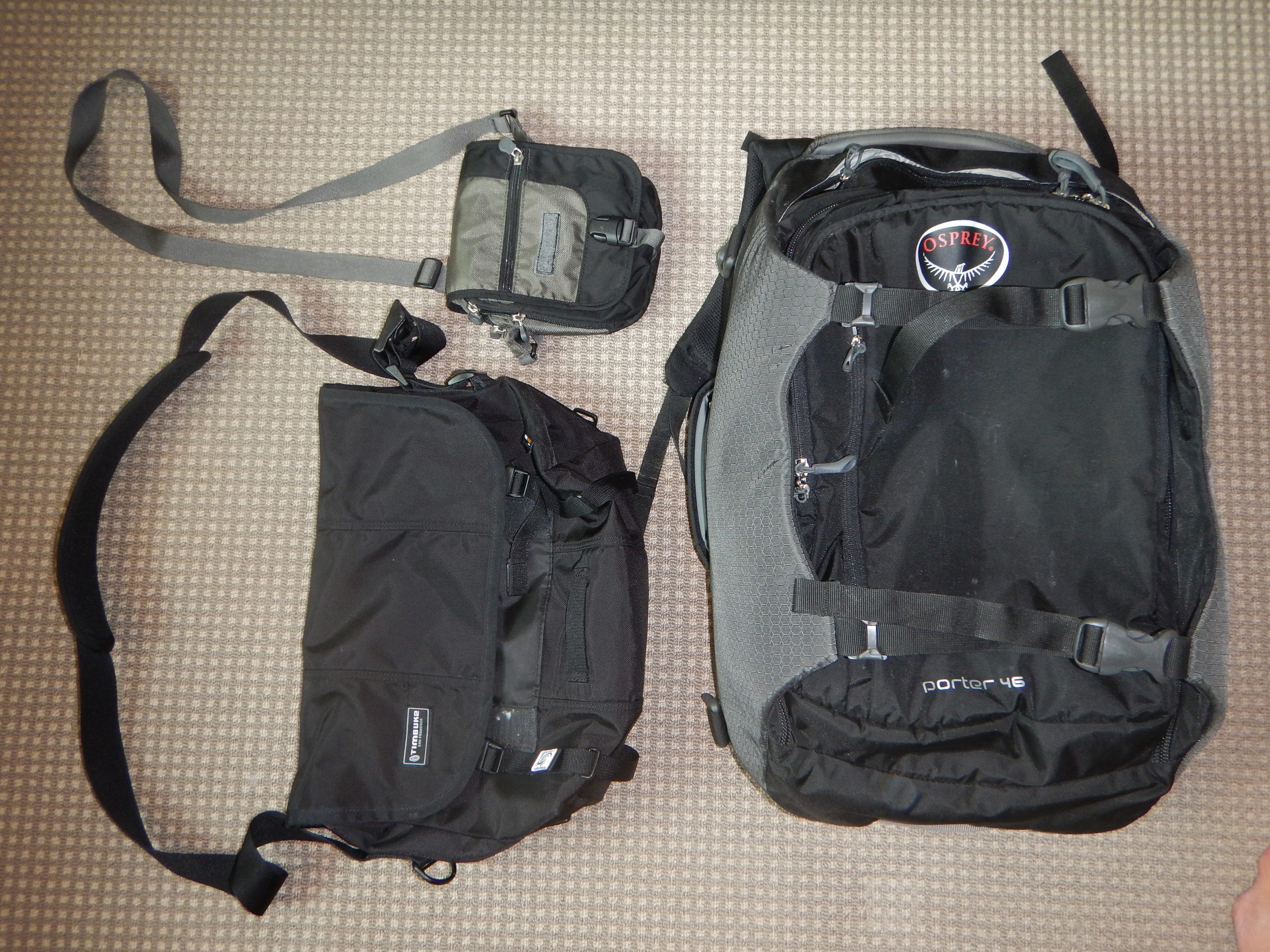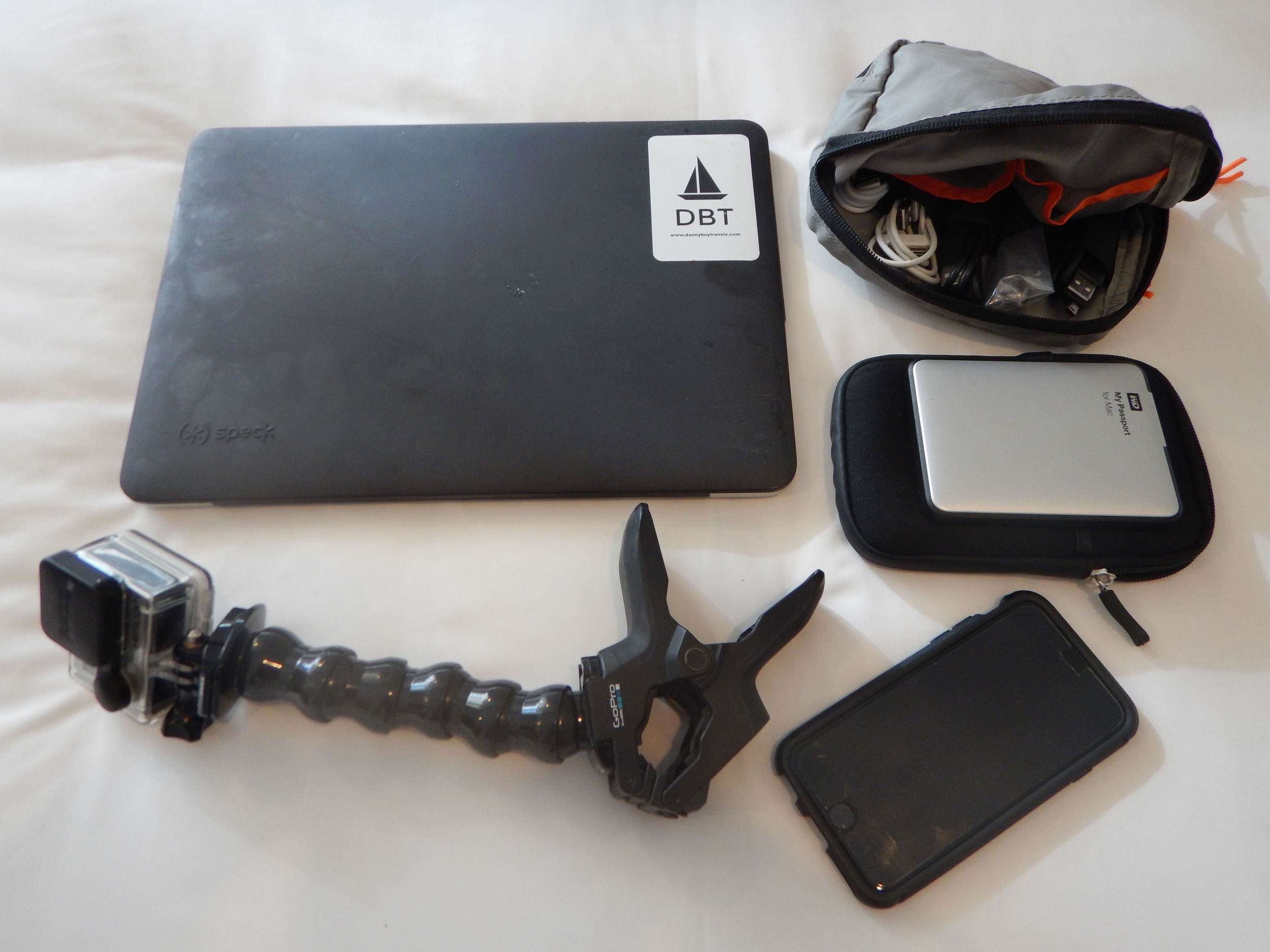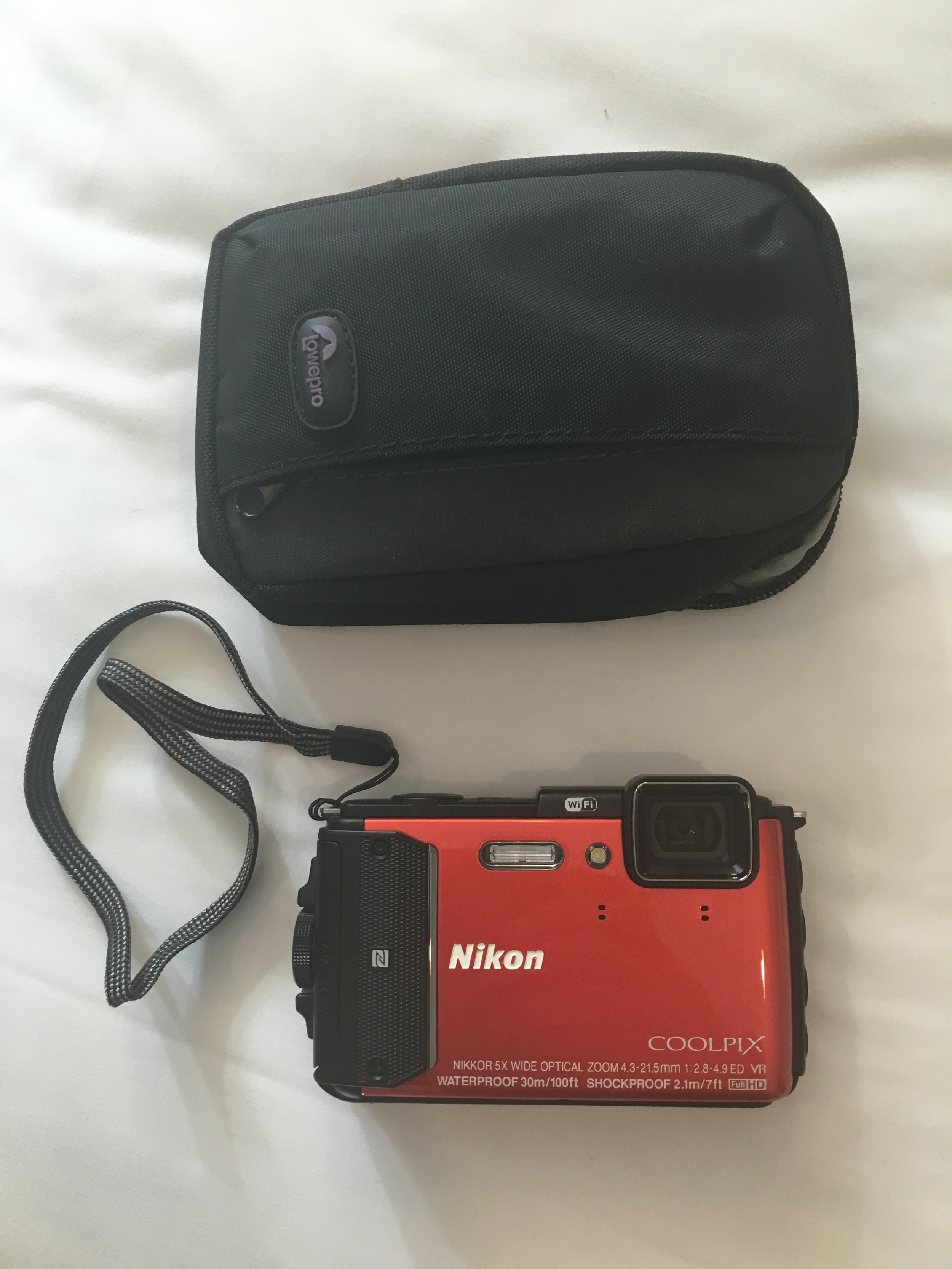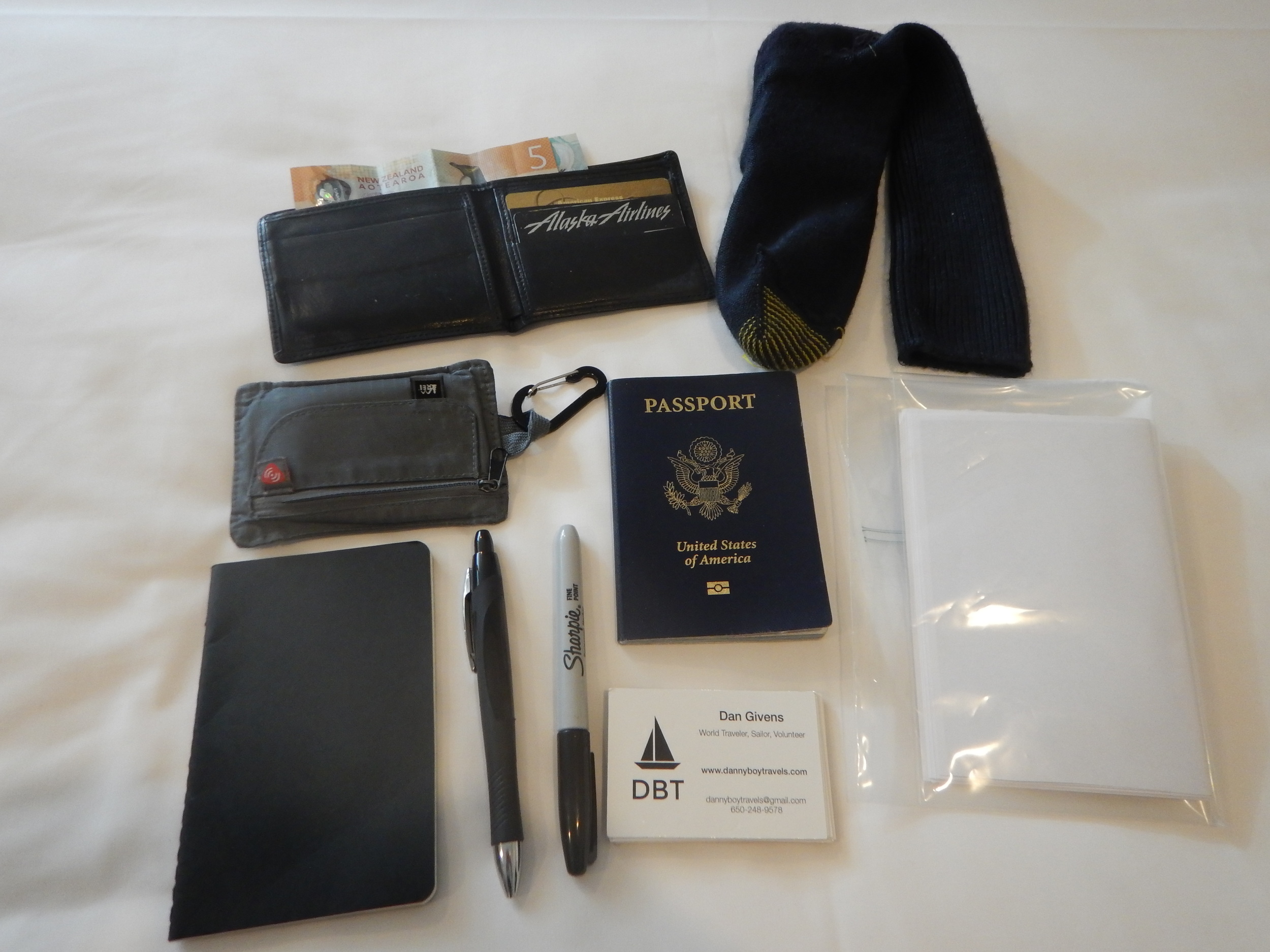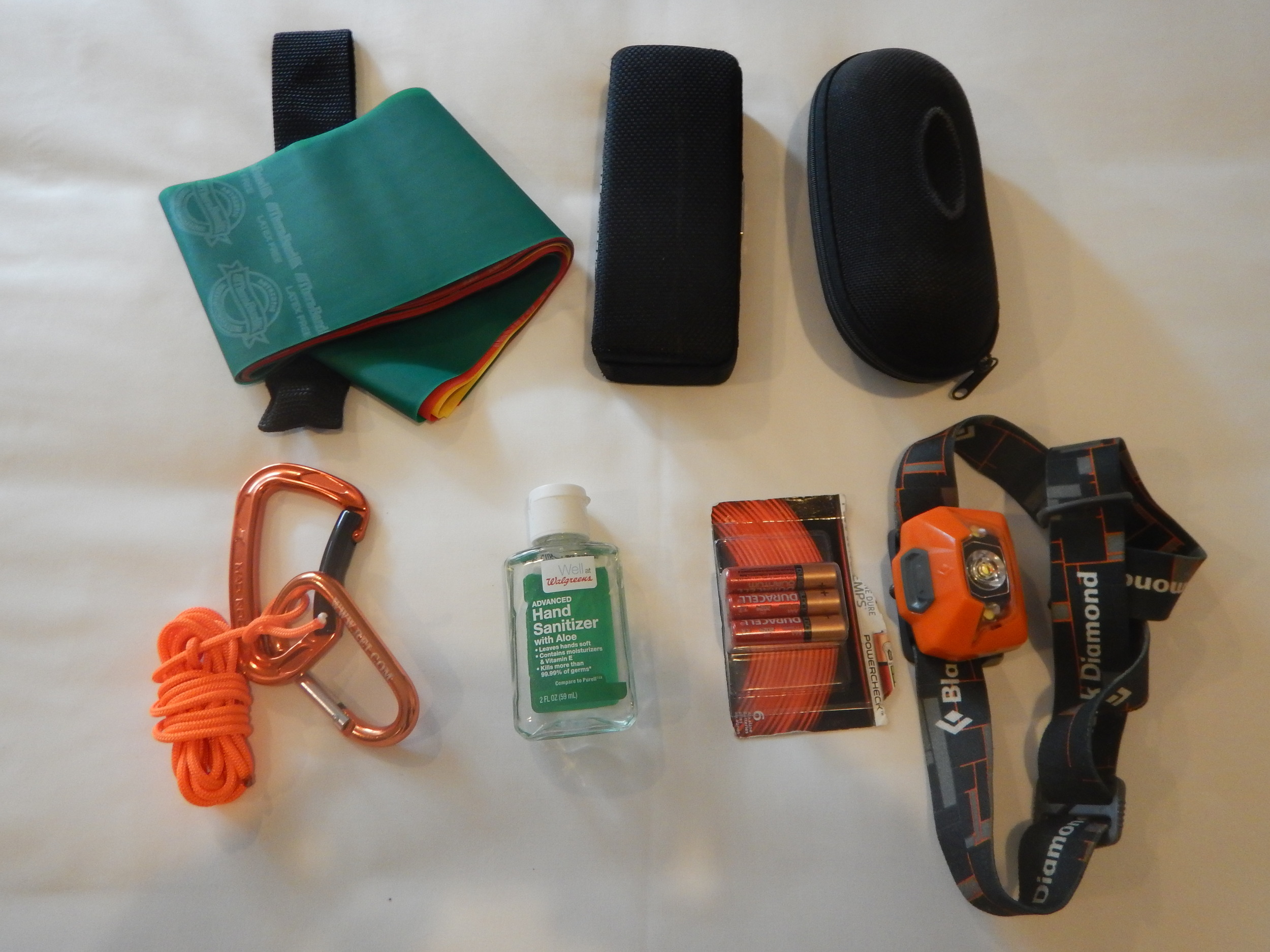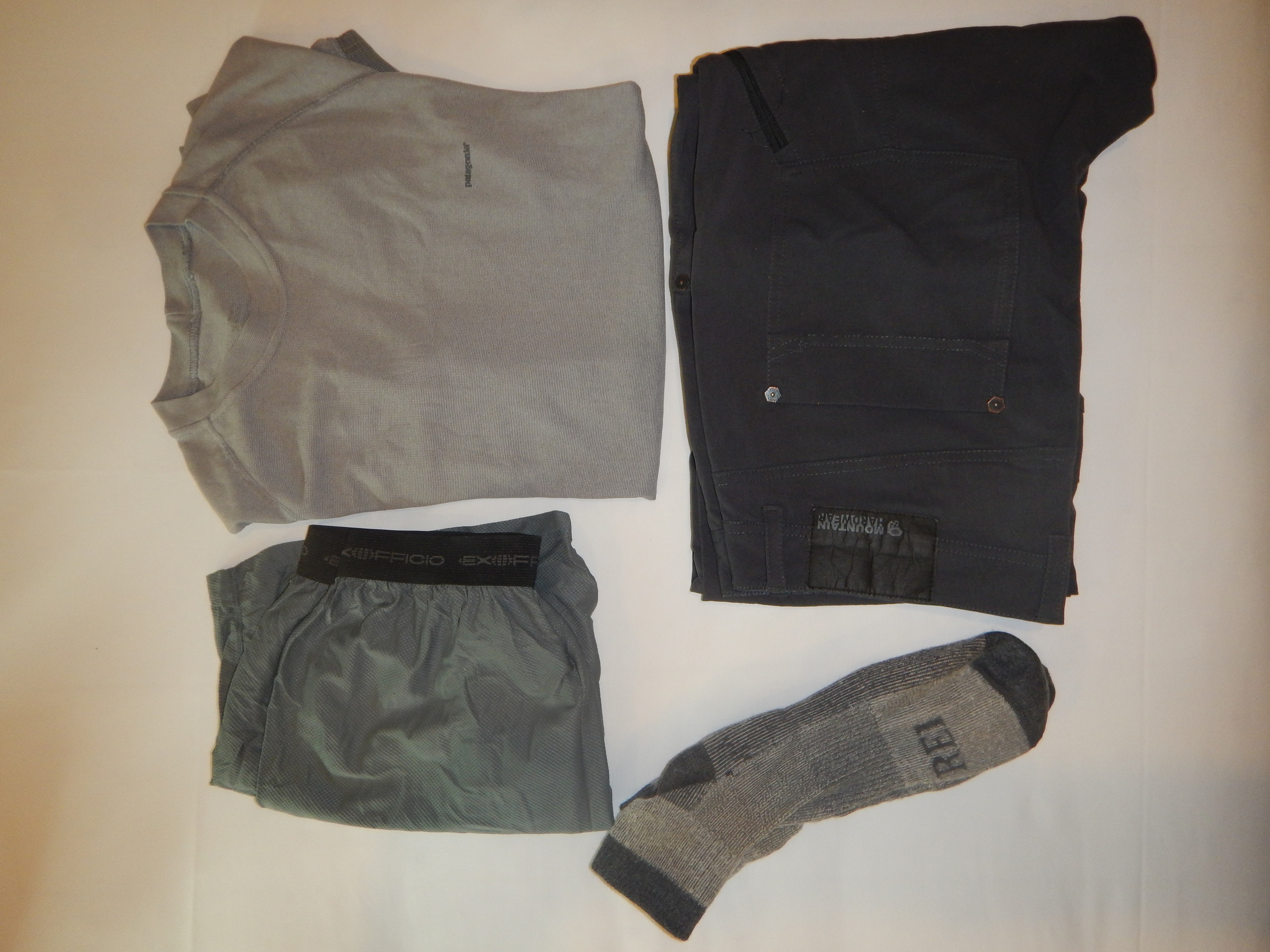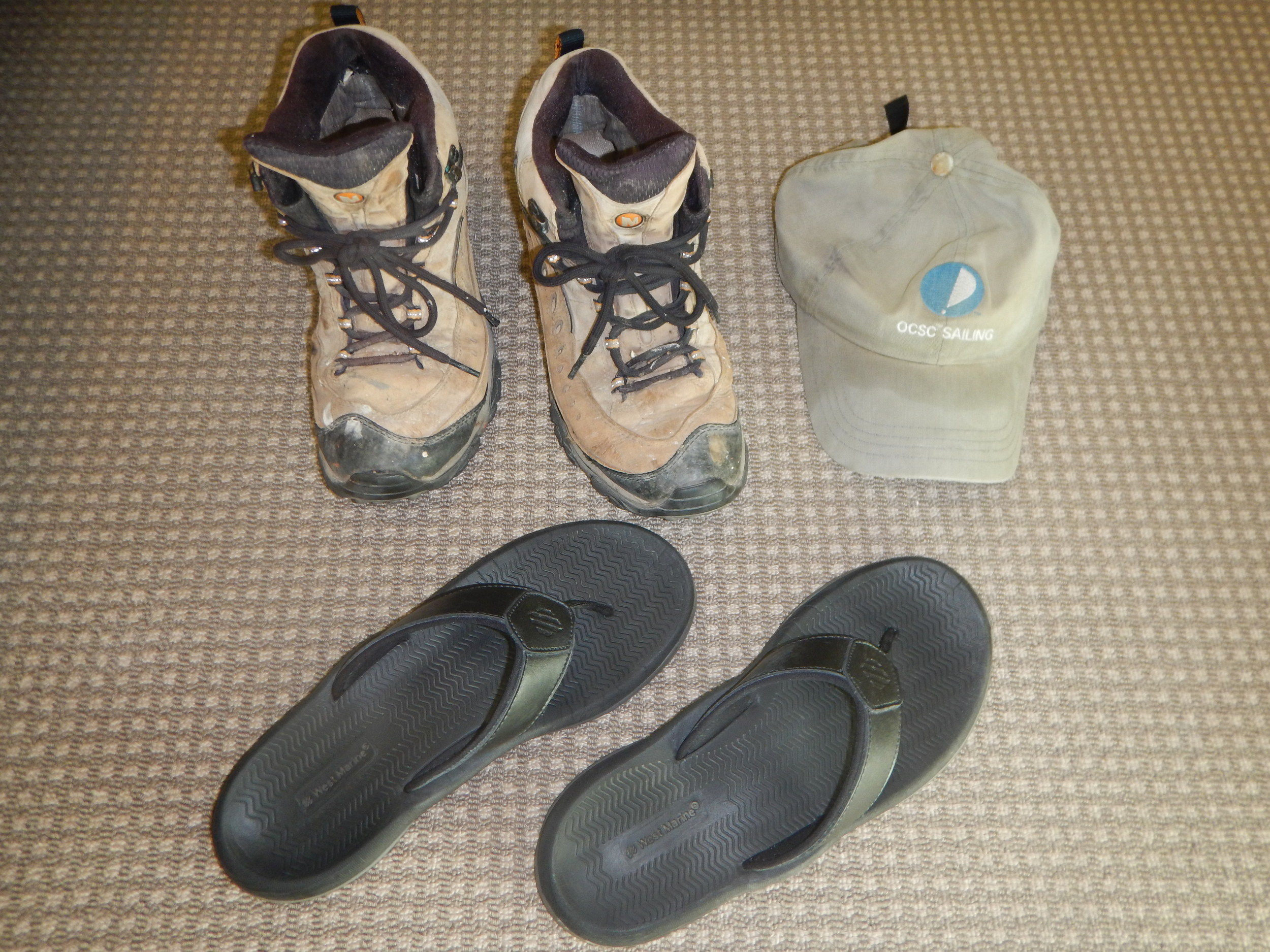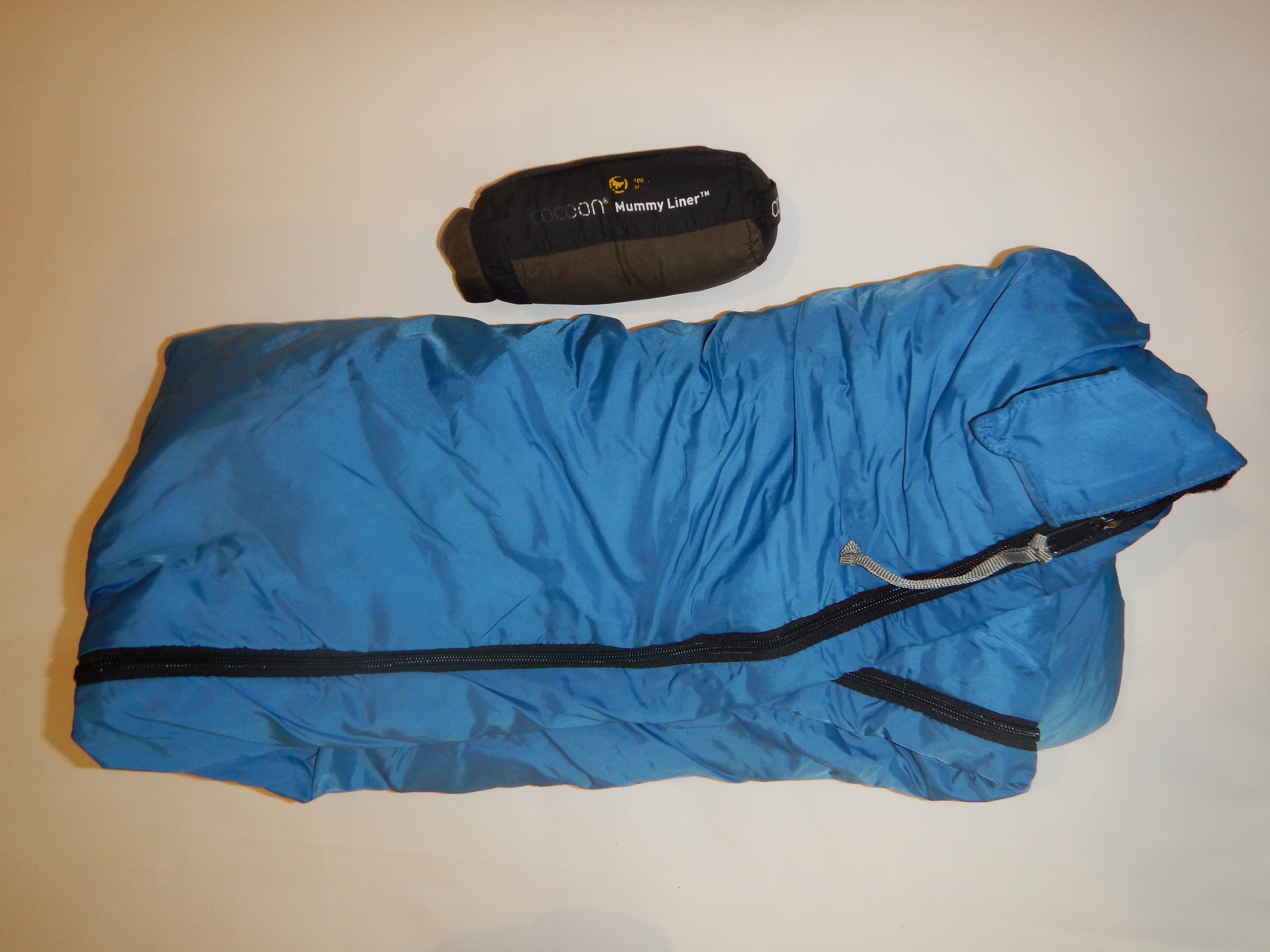Travel Gear
I love gear and gadgets. Backpacks, jackets, and electronics in particular. It's fair to say it might be an addiction. Ironically, I also pride myself on packing light, efficiently, and creatively. Although I vary my kit (collection of gear) slightly for each particular adventure, the basics don't really change. I thought I would add a page to detail what my basic kit contains, along with photos, brand names, evaluation, etc.
PRIMARY BAG (“Carry-on”)
My standard backpack is the Osprey Porter 46, primarily because it is “carry-on” size. Other key features include shoulder straps that zip into the back of the pack to avoid getting caught on conveyor belts, big padded handle for when it’s not on your back, and reinforced side panels to protect the contents. This pack may not be as “cool” as the hardcore backpacking pack I used to use, but it’s very functional.
I used to use an internal-frame Osprey backpacking backpack. I thought it was cool and made me look like a real adventurer. But I found that the bigger pack just allowed me to bring more stuff, and/or take home more stuff. In both cases, a lot of the ‘stuff’ was never used. In addition, the internal frame backpack slightly exceeded “carry-on” size. I could usually sneak onto the plane with it – but sometimes I got caught and had to check the bag. (For this reason, I would carry an empty large duffel bag from REI. If I had to check my backpack, I would put it inside the duffel bag, thereby eliminating the risk of all the straps getting caught in the airport conveyor belts.)
SECONDARY BAG (“Personal Item”)
My “personal item” is a small Timbuktu messenger bag. This fits my laptop and other personal items I might need frequent or quick access to: camera, notepad/pen, sunglasses, business cards.
Depending on the trip, I have an alternate “personal item.” When I take my Nikon D750 digital SLR camera with me, I opt for my Lowepro camera bag (not pictured). This has a special padded compartment for my camera and extra lens. It also has a dedicated laptop sleeve that fits my Macbook Pro, and an upper compartment that fits my GoPro, chargers/cords, and sunglasses.
Since my current trip to New Zealand will involve a lot of wet, salty air, I left my DSLR at home and therefore opted to carry the messenger bag as my “personal item.”
AUXILIARY BAG (Man Purse, Ultra-light Day Pack, or Camel-Bak)
I usually carry a third bag that I use once I’m at my destination. Until then, I keep it tucked away within my primary or secondary bag. Which exact bag depends on my destination and activity. I have three favorites. First, for simple essentials like camera, sunglasses, passport, and map, I’ll use a small shoulder bag that one might call a man-purse, or “murse.” This is pictured below, and what I’m using for the New Zealand trip. Second, I sometimes bring my REI Flash 18, an ultra-light day pack. This was great in Thailand and Chile to carry my volunteering gear. Third, for really physical trips, I’ll bring my mid-sized CamelBak.
ELECTRONICS
Electronics gear is very important to me for documenting my trip, accessing information online, and staying in touch with friends back home.
Most important is my Iphone 6s. From a purely technical standpoint, it’s probably all I really need, given its multitude of functions. But, from a convenience and performance standpoint, I need more devices.
To capture the spirit and adventure of my trips, I rely on my Go Pro Hero 3+, with the Go Pro clamp-on monopod.
Ideally, I would also always have my Nikon D750 DSLR camera, with NIKKOR 28-300mm and 50mm prime lenses. However, on some trips, this big, expensive camera is more a liability (theft, weather, weight) than an asset.
For this New Zealand trip, I have purchased a new compact camera, the Nikon Coolpix AW130. It is waterproof and shockproof. I think it will fit in nicely to my lifestyle, and allow me to travel more worry-free. It doesn’t have a retractable lens, which has given me so much trouble in the past with other cameras. (I’ve gone through two Canon Elphs and one Sony Cybershot over the last few years.) The tradeoff is that the AW130 only has 5x zoom, vs. 20x zoom on other travel cameras. I’ll have to zoom with my feet, as they say. (Of course that will be hard on a sailboat if I’m trying to take a picture of marine life.)
To document my trip, I carry my Macbook Pro, with a backup Western Digital “My Passport” external harddrive (500 gigabyte). I use the laptop for writing blog updates, making video compilations, storing photos, and of course trip-planning and research.
Sometimes I carry a Mophie power brick so I can charge my Iphone or Go Pro on the go. But due to weight, space, and modern conveniences, I find myself leaving it at home more often than not.
With all of these devices come the cords, chargers, and sometimes protective cases. I have a dedicated zippered bag that keeps all of cords and chargers tidy and accessible.
DOCUMENTS AND CASH
Of course my U.S. Passport is at the top of the list here. I also carry photocopies of passport and credit cards and an extra set of passport photos in a Ziploc bag.
I use an RFID blocking zippered wallet for my credit cards and cash, which I keep in my front pocket.
In my back pocket, I carry a “fake wallet” which has old/cancelled credit cards, and a small amount of local currency and U.S. dollars. This has saved me at least once from being robbed big time. If an unwanted encounter occurs, the idea is to just hand over my fake wallet and walk away.
I keep a wad of US dollars in an old sock or some other hiding place in one of my bags. I've been known to leave my ATM card in the machine, or leave my credit card at a restaurant. It's good to always have some extra cash on hand.
I also have a small journal, ball-point pen, and Sharpie permanent marker.
And my newest addition is a set of DBT business cards and stickers to facilitate connecting with new friends or volunteering hosts. I made the cards and stickers using Moo.com.
PERSONAL ITEMS
I bring two pairs of prescription glasses – regular and sunglasses.
I bring my Black Diamond Storm headlamp and extra batteries. This headlamp has both white and red lights. (The red light mode protects your night vision.)
On my recent volunteering trips, I have not really known ahead of time what the accommodations will be like. To be safe, I always bring a lightweight REI Helio Sleeping Bag and Cocoon silk sleep sack. The sleeping bag is synthetic-fill and rated to 55 degrees. The sleep sack is easily washable, adds 5-10 degrees of warmth to the sleeping bag, and keeps the inside of the sleeping bag clean. Yes, there have been times when I wish I had had my 0 degree rated down-filled bag.
I bring at least one elastic workout band. Historically, I use the SPRI bands because they have nice handles. But the handles add weight. I recently discovered the handle-less and super lightweight Thera-Bands, so I have switched over to that brand.
I bring about 20 feet of spectra cord to use as clothesline, and a couple of carabiners to clip gear (e.g., water bottle, camera pouch, etc.) to belt or bag.
I won’t get into personal hygienic items – everyone should remember to bring a toothbrush, dental floss, deodorant, sunscreen, etc. But if you don’t, 7-11 convenience stores seem to be everywhere these days. One thing I like to carry is hand sanitizer and baby/sanitizing wipes to avoid germs. Getting sick on the road is no fun.
Obviously, one thing you can’t buy is prescription medicine. So visit your doctor and make sure you bring whatever you need. I always bring a 10-day supply of antibiotics and Ciprofloxacin just in case. Also you should read the www.CDC.gov travel page for the countries you’re visiting to make sure you’re prepared with appropriate immunizations.
CLOTHING
Clothing, also, is a personal choice based on style, weather, destination, etc. so I won’t spend a lot of time on it here. However, I do have a few standard parts to my wardrobe that I never leave home without.
For my upper body, I wear Patagonia quick dry T-shirts (short or long sleeve). These can be washed at night, and will be dry in the morning. In cold weather, I’ll start with an Icebreaker long sleeve shirt base layer and then the T-shirt. I then have 1-2 additional layers before my outer shell. These vary in thickness depending on weather. My current favorite is a hoodie from Arc'Teryx. I always bring at least one collared shirt too for that night out on the town.
For my lower body, I wear Ex Officio quick-dry boxer shorts. They are expensive, but super breathable and comfortable. Like the T-shirts, these can be washed/dried overnight. My absolute favorite pant is the Mountain Hardwear Piero -- water resistant, with reinforced knees. They are my go-to pant for sailing, hiking, and volunteering. For normal day-to-day wear, I have a quick-dry khaki slacks from Colombia and REI, each with at least one zippered pocket for security. These aren't cargo pants, as I find those overly touristy-looking. For nighttime, I wear jeans. Depending on the weather, I’ll bring long underwear.
Note: I typically do not bring short pants when traveling, other than a pair of workout shorts that can double as a swimsuit or hiking shorts. In many locations, shorts scream tourist. But I also like the protection from sun and bugs that long pants offer. In terms of swimming, I also bring an O'neill Rashguard (swim shirt) to protect from the sun if I'm snorkeling for an hour.
For footwear, I use REI smart wool socks, in a variety of thicknesses depending on activity. My choice of shoes depends on the type of traveling and activities I’ll be doing. In general, it is a pair of sturdy waterproof boots (Merrell for medium-core, Salomon for hard-core), a pair of flip flops, and in some cases, a pair of black dress shoes if I know I’m going to be in an urban setting. My travel recently has been more about working, volunteering, and sailing, so I haven’t needed the dress shoes. Boots have been critical. Even in the hot Thailand weather.
For my outer layer, I go with a waterproof shell. My favorites here are the Marmot Precip or Marmot Minimalist jacket. Both are very effective at shedding water. On hiking trips, I will bring a pair of waterproof pants as well.
So how much of everything above do I bring?
Obviously it depends on weather and activities. In general, I try to make sure I have a clean base layer (T-shirt, underwear, socks) for four days. The next layer (pants, long-sleeve shirts) is not directly next to my skin so stays cleaner theoretically, but I still need some variety. In the end, it really depends on the weather and activities. I have two black zipper-neck long-sleeve shirts of two different thicknesses. These get me through a lot. They both stuff easily into my daypack (or the lighter one easily into my messenger back or man-purse). And since they are black, I can even wear them in the evening with a pair of jeans and look respectable.
I usually lay everything out on the bed before packing – then I go through and try to remove half of what I laid out originally. It’s kind of like going to the grocery store when you’re hungry – you want more than you really need.
More important is how I pack the items.
I like my stuff to be organized, so I use a lot of dry bags (I prefer Sea to Summit dry bags), stuff sacks, packing cubes (like from Eagle Creek), or even Ziploc bags. I don’t overdo it though, because each of these organizing solutions adds more weight to the overall backpack.
PHOTOS OF MY TRAVEL GEAR
Here is a gallery of my gear mentioned above. It's not itemized, but I will add hyperlinks to the gear in the text you can click and go right to the vendor to purchase. :-)

